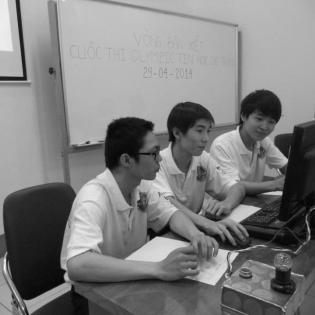Speaking for the Minority Voice
Youth make a plan as empowered and responsible members of the civil society to take action to prevent bullying behavior while being sensitive to the people involved, from the victim to the bystander to the bully.
The learners will:
- utilize the persuasive power of written or oral communication as an instrument of change in the community, nation or the world.
- select a service project based on interests, abilities, and research.
- articulate and demonstrate the safety procedures that are part of the volunteer experience.
- describe the procedures and the importance of sensitivity to the people with whom students are working.
-
advocacy: the act or process of speaking in favor of a cause
-
bullying: repeated negative behavior with a desire to harm someone with less power (size, strength, or other perceived imbalance of power); The aggressor appears to enjoy the interaction, and the victim feels oppressed.
-
bully: a person who habitually acts with the intention of threatening, intimidating, or harming others, particularly people who appear weaker
-
civic virtue: morality or a standard of righteous behavior in relationship to a citizen's involvement in society. An individual may exhibit civic virtue by voting, volunteering, organizing a book group, or attending a PTA meeting.
-
civil rights: the rights of freedom guaranteed to all U.S. citizens as described in the 13th and 14th Amendments to the Constitution
-
minority: a group of people who are either perceived to have less power or have had their power taken away by an oppressive group
-
philanthropist: someone who gives time, talent, or treasure and takes action for the common good
-
social capital: personal investment of time through social interactions that builds trust and enables participants to act together more effectively to pursue shared objectives
- empathy: identification with and understanding the feelings of another person
Instructions
Anticipatory Set:
Remind the learners that they are part of the civil society sector that takes action to address real needs of people when those needs aren't met by the administration (government and business), just like a civil rights leader.
Tell them that they have or can obtain the skills and knowledge to address the issue of bullying at school.
Here are some rough ideas for taking action:
- Make PSAs against bullying behavior and to teach people how to respond.
- Use persuasive writing as an instrument of change.
- Publicize a list of available mental health resources.
- Publicize creative and meaningful opportunities to help people deal with negative feelings in a better way than bullying others.
Philanthropy Framework
-
Strand PHIL.III Philanthropy and the Individual
-
Standard PI 01. Reasons for Individual Philanthropy
-
Benchmark HS.1 Define and give examples of motivations for giving and serving.
-
-
-
Strand PHIL.IV Volunteering and Service
-
Standard VS 01. Needs Assessment
-
Benchmark HS.1 Identify a need in the school, local community, state, nation, or world.
-
-
Standard VS 02. Service and Learning
-
Benchmark HS.1 Select a service project based on interests, abilities, and research.
-
Benchmark HS.2 Identify specific learning objectives from the academic core curriculum that are being applied in the service-learning project.
-
-
Standard VS 03. Providing Service
-
Benchmark HS.1 Provide a needed service.
-
-
Standard VS 05. Integrating the Service Experience into Learning
-
Benchmark HS.2 Evaluate progress on the service-learning project before, during, and after the project.
-
Benchmark HS.3 Identify outcomes from the service.
-
-
